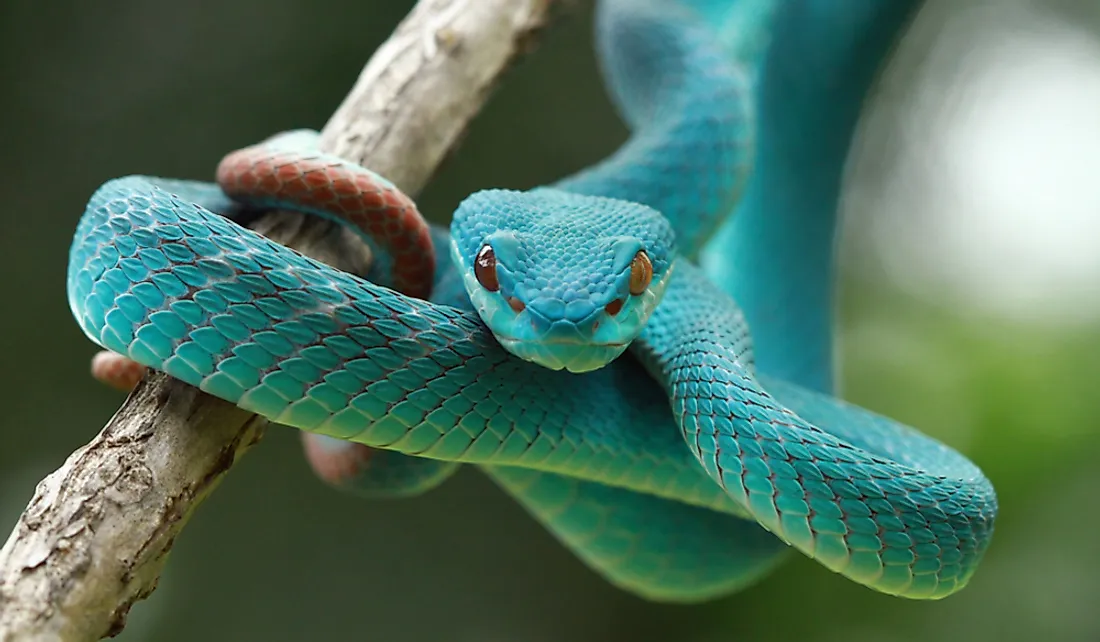How Many Species Of Snakes Are There?

Snakes are limbless reptiles of the Serpentes suborder, closely related to lizards. They range in size from four inches (Barbados threadsnake) to 393 inches long (reticulated python). Snakes have varying body shapes and length depending on the species’ lifestyle and diet. About 70% are oviparous (lay eggs) while the rest are non-oviparous but do not go through the larval stage. There are approximately 3,600 known species of snakes in the world. There are about 375 species of venomous snakes and only a small proportion are harmful to humans.
Distribution
Although snakes are common in warm, tropical areas, they have an extremely large global distribution. They inhabit all continents with an exception of Antarctica and other small land masses such as New Zealand, Iceland, and Ireland. They are found in a wide range of habitat and have the ability to move over the land, climb trees, and swim with ease.
Classification of Snakes
Snakes are vertebrates belonging to phylum Chordata. Like all reptiles, they are considered tetrapods, meaning four-limbed animals. However, snakes do not have legs but evolved from four-legged ancestors. Although some legless lizards, which have also lost their legs through evolution, look exactly like snakes, they are not species of snakes. However, some evidence indicates that snakes may have originated from some species of lizards including the Varanids in the Cretaceous Period.
They further belong to class Reptilia where together with the lizards form the order Squamata. All the modern snakes are grouped into suborder Serpentes. The suborder is further divided into two infraorders; Scolecophidia which comprises mainly of the blind snakes and Alethinophidia which include the non-blind snakes. Scolecophidia comprised of about 305 known species while Alethinophidia is made up of over 2,600 species and sometimes split into Henophides and Caenophides. Caenophides consist of Colubridae, the largest snake family (51% of all known snakes), vipers, and elapids.
Summary of the Snake Families
As indicated above, snakes are divided into two main infraorders; Alethinophidia and Scolecophidia. Alethinophidia is further divided into 19 families Colubridae (the largest with 1,866 species), Elapidae (359 species), Viperidae (341 species), Lamprophiidae (314 species), Boidae (60 species), and Uropeltidae (55 species). Other snake species in this infraorder include wart snakes, false coral snakes, splitjaw snakes, pythons, and dragon snakes.
Infraorder Scolecophidia is made up of five families, mainly consisting of the blind snakes. The largest family, Typhlopidae, consist of 266 species, mainly the typical blind snakes. The family Leptotyphlopidae is made up of 139 species, mainly the slender blind snakes. The other three families are Anomalepidae (18 species of primitive blind snakes), Gerrhopilidae (18 species), and Xenotyphlopidae which consist of only one species; the round-nosed blind snake of Northern Madagascar.











